COMMENT OF THE DAY: MONTROSE HASN’T EVEN HIT PUBERTY YET  “I regularly walk around in Montrose. I’ve also been to many urban neighborhoods in the northeast which are as close to 100% gentrified as you can get. I’m talking Greenwich Village in NYC, Beacon Hill in Boston, Georgetown in DC.
Montrose is not anywhere close to that level of gentrification. It won’t even be there in 20 years. Right now, you can still walk around Montrose and see loads of old 60s and 70s garden complexes with $700 a month apartments. There are plenty of trashy convenience stores, rundown strip malls, and vacant lots. And yes, there are still plenty of young artists and musicians who live in the area and hang out in areas like the Menil plying their craft.
Any neighborhood where a lot on a major commercial street can sit vacant for over a year is not that gentrified yet.
Okay, so yes. Montrose is obviously gentrifying. It’s different from how it was 20, 30, 40 years ago. That’s part of city life–places change, some people move out, other people move in. And eventually, maybe in a few decades, if Houston doesn’t get destroyed in a hurricane or become the next Detroit due to economic collapse, Montrose probably will become the kind of bland-ish upper crust West U-ish neighborhood people act like it already is. But here’s the reality: It’s not there yet, and it won’t be for quite awhile.” [Christian, commenting on Comment of the Day Runner-Up: The Creative Destruction of Montrose] Illustration: Lulu
“I regularly walk around in Montrose. I’ve also been to many urban neighborhoods in the northeast which are as close to 100% gentrified as you can get. I’m talking Greenwich Village in NYC, Beacon Hill in Boston, Georgetown in DC.
Montrose is not anywhere close to that level of gentrification. It won’t even be there in 20 years. Right now, you can still walk around Montrose and see loads of old 60s and 70s garden complexes with $700 a month apartments. There are plenty of trashy convenience stores, rundown strip malls, and vacant lots. And yes, there are still plenty of young artists and musicians who live in the area and hang out in areas like the Menil plying their craft.
Any neighborhood where a lot on a major commercial street can sit vacant for over a year is not that gentrified yet.
Okay, so yes. Montrose is obviously gentrifying. It’s different from how it was 20, 30, 40 years ago. That’s part of city life–places change, some people move out, other people move in. And eventually, maybe in a few decades, if Houston doesn’t get destroyed in a hurricane or become the next Detroit due to economic collapse, Montrose probably will become the kind of bland-ish upper crust West U-ish neighborhood people act like it already is. But here’s the reality: It’s not there yet, and it won’t be for quite awhile.” [Christian, commenting on Comment of the Day Runner-Up: The Creative Destruction of Montrose] Illustration: Lulu
Tag: Gentrification
COMMENT OF THE DAY RUNNER-UP: THE CREATIVE DESTRUCTION OF MONTROSE  “No one likes it when a fun edgy neighborhood like Montrose gentrifies. Seeing original funky local haunts replaced by chains and high end destinations is like losing an old friend. But this process of gentrification is actually good in the long run because each generation gets a new chance at building a home for the local counterculture. Without that cycle of displacement and rebirth, the counterculture becomes entrenched and turns into an establishment culture within the counterculture. Rising rents in Montrose pushed out lots of artists. But it also created demand for studio space that gave birth to the 1st Ward arts district and great new developments like the Silos. And the same dynamic is playing out for bars and clubs popping up all over the east side. The counterculture lives on and thrives when each generation has a chance to find their own voice by converting a forgotten part of the city into the next counterculture hub. In the end, the kids are alright. They just need a push out into the wilderness every few decades to keep things fresh.” [Old School, commenting on The Death, Life, and Continuing Obituary of Montrose, Still Texas’s ‘Coolest Neighborhood‘] Illustration: Lulu
“No one likes it when a fun edgy neighborhood like Montrose gentrifies. Seeing original funky local haunts replaced by chains and high end destinations is like losing an old friend. But this process of gentrification is actually good in the long run because each generation gets a new chance at building a home for the local counterculture. Without that cycle of displacement and rebirth, the counterculture becomes entrenched and turns into an establishment culture within the counterculture. Rising rents in Montrose pushed out lots of artists. But it also created demand for studio space that gave birth to the 1st Ward arts district and great new developments like the Silos. And the same dynamic is playing out for bars and clubs popping up all over the east side. The counterculture lives on and thrives when each generation has a chance to find their own voice by converting a forgotten part of the city into the next counterculture hub. In the end, the kids are alright. They just need a push out into the wilderness every few decades to keep things fresh.” [Old School, commenting on The Death, Life, and Continuing Obituary of Montrose, Still Texas’s ‘Coolest Neighborhood‘] Illustration: Lulu
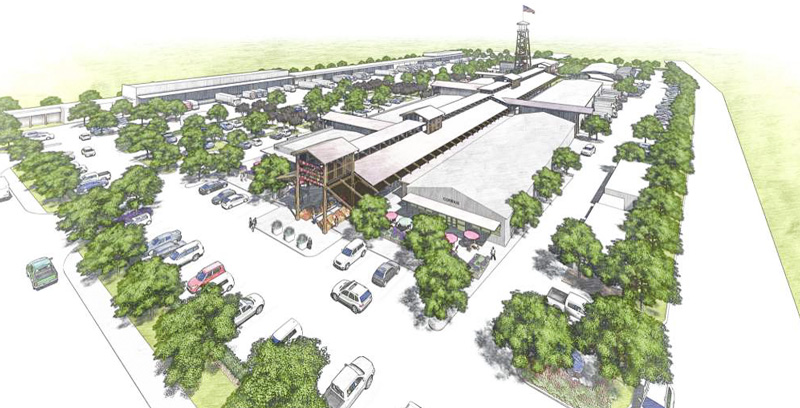
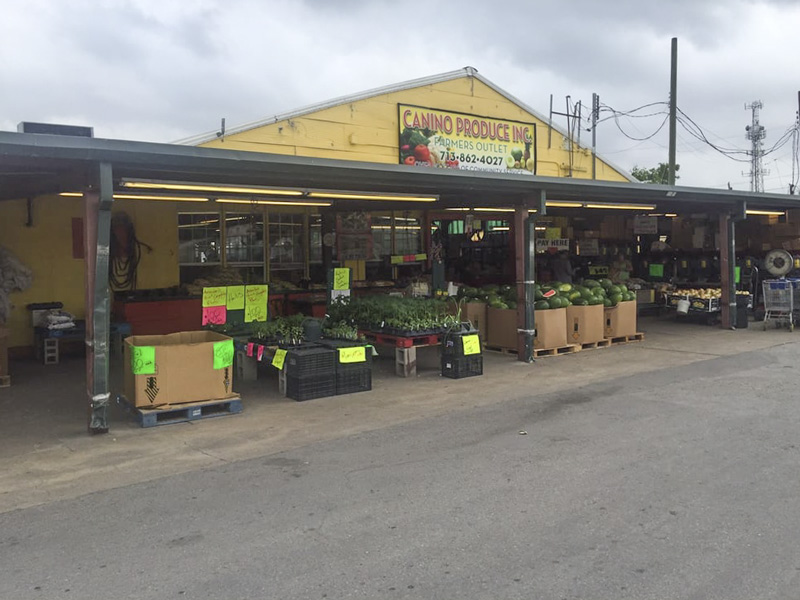 As mentioned earlier today, more details on the plan to redo the 1940’s farmers market on Airline Dr. are now out — MLB released some sketches and site plans this morning, which the company says are meant to help turn the spot into a “destination retail experience.” The renderings show most of the gaps between the existing market buildings bridged by new rooftops and green spaces, connecting the structures into a single complex (some of which will likely get air conditioned for fish and dairy operations and the like).
As mentioned earlier today, more details on the plan to redo the 1940’s farmers market on Airline Dr. are now out — MLB released some sketches and site plans this morning, which the company says are meant to help turn the spot into a “destination retail experience.” The renderings show most of the gaps between the existing market buildings bridged by new rooftops and green spaces, connecting the structures into a single complex (some of which will likely get air conditioned for fish and dairy operations and the like).
It’s not totally clear whether some the existing buildings are actually going to be painted white, or if the details of planned finishes just haven’t made their way into the renderings at this stage of design — but the currently-yellow front of Canino’s can be spied rocking a pale grey skin in the sketches above and below, behind the market’s new double-height entry facade:
CANINO MARKET HAD ALREADY KINDA GENTRIFIED, SAY FOLKS PLANNING UPCOMING $10-MILLION REDO 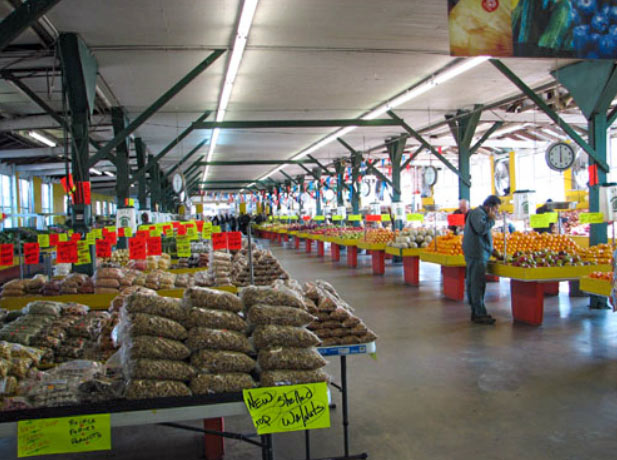 “Over time,” writes Nancy Sarnoff for the Chronicle this morning after talking to some of the folks behind that in-the-works redevelopment of the recently sold Canino farmer’s market on Airline Dr., the market has already become “a place where produce [is] shipped and trucked in from places like Mexico and elsewhere, like it is to a grocery store.” The local farmers and early-morning bread-seekers are mostly gone, and property values  in the neighborhood are already on the rise — as are the townhomes. “We’ve come to the realization that no matter what we do here, it’s already happening,” MLB Partners’s Todd Mason tells Sarnoff; “We’ve looked around to buy more over here, and prices have already escalated.” The developers also run through some of the details for the $10-million project with Chris Baldwin over at PaperCity, who writes that “the 17.5-acre site is being almost completely re-imagined” — potential changes include some 60,000 sq. ft. of additional space, a “large lounging lawn,” a children’s play area, and “a distinctive towering sign from Studio Red Architects that can be seen from the freeway.” [Houston Chronicle and PaperCity; previously on Swamplot] Photo: Canino Produce Market
“Over time,” writes Nancy Sarnoff for the Chronicle this morning after talking to some of the folks behind that in-the-works redevelopment of the recently sold Canino farmer’s market on Airline Dr., the market has already become “a place where produce [is] shipped and trucked in from places like Mexico and elsewhere, like it is to a grocery store.” The local farmers and early-morning bread-seekers are mostly gone, and property values  in the neighborhood are already on the rise — as are the townhomes. “We’ve come to the realization that no matter what we do here, it’s already happening,” MLB Partners’s Todd Mason tells Sarnoff; “We’ve looked around to buy more over here, and prices have already escalated.” The developers also run through some of the details for the $10-million project with Chris Baldwin over at PaperCity, who writes that “the 17.5-acre site is being almost completely re-imagined” — potential changes include some 60,000 sq. ft. of additional space, a “large lounging lawn,” a children’s play area, and “a distinctive towering sign from Studio Red Architects that can be seen from the freeway.” [Houston Chronicle and PaperCity; previously on Swamplot] Photo: Canino Produce Market
COMMENT OF THE DAY: FOR IF YOU GAZE LONGINGLY AT TRENDY DEVELOPMENT, IT GAZES ALSO BACK AT YOU  “All you ‘trendy people’ in Spring Branch need to bear in mind that even though your property values have risen dramatically, legacy homeowners don’t just immediately convert or turn over into ‘trendy people.’ That’s a process that takes time — [and] once it happens, you’ll feel nostalgia for the way things were. The newcomers won’t be ‘trendy’ — that term has positive connotations and you’ll reserve it for yourself. You will speak of them in derogatory tones, using words like yuppie and hipster. You’ll complain about how they’ve overrun your neighborhood, creating parking SNAFUs, cyclist-disrespecting traffic, and drunk drivers. You’ll complain about how closely packed the new townhomes are, even though you live in one; and about how loud the bars are, even though you bought a house next to one that had been there for 20 years. You’ll complain about how your property taxes rise 10 percent per year every year, and simultaneously protest new public housing, even though your unrealized capital gains are being subsidized by state statue — and you’ll demand even more subsidy! You might even vote for Dan Patrick. You’ll vote for localized prohibition and think that it’s ‘weird,’ kind of like living in Austin would be, except you don’t live in Austin and aren’t as weird as them — which is a terrible thing because they aren’t very weird either. You will have been co-opted by the powers that be. This is understandable. You were trendy, and will fall in line with somebody, sort of thoughtlessly, and complain relentlessly. That’s what it is to be trendy. It’s what you always wanted.” [TheNiche, commenting on Comment of the Day: Send the Trendies Outside the Loop, Please] Illustration: Lulu
“All you ‘trendy people’ in Spring Branch need to bear in mind that even though your property values have risen dramatically, legacy homeowners don’t just immediately convert or turn over into ‘trendy people.’ That’s a process that takes time — [and] once it happens, you’ll feel nostalgia for the way things were. The newcomers won’t be ‘trendy’ — that term has positive connotations and you’ll reserve it for yourself. You will speak of them in derogatory tones, using words like yuppie and hipster. You’ll complain about how they’ve overrun your neighborhood, creating parking SNAFUs, cyclist-disrespecting traffic, and drunk drivers. You’ll complain about how closely packed the new townhomes are, even though you live in one; and about how loud the bars are, even though you bought a house next to one that had been there for 20 years. You’ll complain about how your property taxes rise 10 percent per year every year, and simultaneously protest new public housing, even though your unrealized capital gains are being subsidized by state statue — and you’ll demand even more subsidy! You might even vote for Dan Patrick. You’ll vote for localized prohibition and think that it’s ‘weird,’ kind of like living in Austin would be, except you don’t live in Austin and aren’t as weird as them — which is a terrible thing because they aren’t very weird either. You will have been co-opted by the powers that be. This is understandable. You were trendy, and will fall in line with somebody, sort of thoughtlessly, and complain relentlessly. That’s what it is to be trendy. It’s what you always wanted.” [TheNiche, commenting on Comment of the Day: Send the Trendies Outside the Loop, Please] Illustration: Lulu
COMMENT OF THE DAY: CHANGING TASTES AT THE CORNER OF MONTROSE AND WESTHEIMER 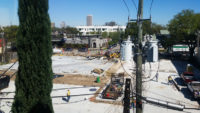 “Dallas invading Houston with its bland ‘designer tacos’ made for yuppies. Right across from Austin’s Uchi, where the waitstaff tells you what you’re suppose to taste as you eat. I remember when you could get a blowjob for $20 in this neighborhood. This is sad.” [MW, commenting on Edge Realty Now Seeking To Fill Bright Orange Box with Neighbors for a Montrose Velvet Taco] Photo: Swamplot inbox
“Dallas invading Houston with its bland ‘designer tacos’ made for yuppies. Right across from Austin’s Uchi, where the waitstaff tells you what you’re suppose to taste as you eat. I remember when you could get a blowjob for $20 in this neighborhood. This is sad.” [MW, commenting on Edge Realty Now Seeking To Fill Bright Orange Box with Neighbors for a Montrose Velvet Taco] Photo: Swamplot inbox
COMMENT OF THE DAY: ARE THE MONEY AND THE WATER FLOWING THE SAME DIRECTION? 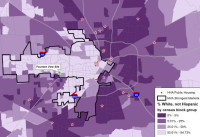 “So I was looking at this the other day and a thought just hit me, based on a comment on another thread: Is this trend of gentrification following the bayous? Seems like that is a major draw to new development, and with the transition of the East End and Third Ward, it looks like a possibility.” [Mr.Clean19, commenting on A Purple Map of Race and Public Housing Projects in Houston] Map: Texas Housers
“So I was looking at this the other day and a thought just hit me, based on a comment on another thread: Is this trend of gentrification following the bayous? Seems like that is a major draw to new development, and with the transition of the East End and Third Ward, it looks like a possibility.” [Mr.Clean19, commenting on A Purple Map of Race and Public Housing Projects in Houston] Map: Texas Housers
COMMENT OF THE DAY: THE SUBTLETIES OF PARKING LOT COMMUNICATION 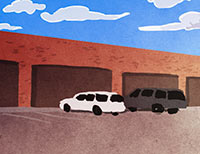 “The wide open parking lot does seem to say, ‘We’re more than ready to receive you’ from retailers that want to have an image as ‘convenient.’ In other situations, the tighter parking supply seems to communicate, ‘This is a popular place where many people like you find happenings worth attending.‘ CityCentre and Rice Village seem to be examples of the second category.” [slugline, commenting on Comment of the Day: Why It’s Still Blacktop Friday] Illustration: Lulu
“The wide open parking lot does seem to say, ‘We’re more than ready to receive you’ from retailers that want to have an image as ‘convenient.’ In other situations, the tighter parking supply seems to communicate, ‘This is a popular place where many people like you find happenings worth attending.‘ CityCentre and Rice Village seem to be examples of the second category.” [slugline, commenting on Comment of the Day: Why It’s Still Blacktop Friday] Illustration: Lulu
COMMENT OF THE DAY RUNNER-UP: THE SCREWBALL MIDTOWN GENTRIFICATION COMEDY YOU’VE BEEN WAITING TO SEE 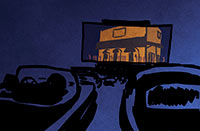 “The whole fooders trying to gentrify the post-grad frats out of midtown would be a good subject for a Vince Vaughn movie. The frats won’t take loss of their party town laying down. There will be hijinks before the eventual migration of the frat houses to EaDo.” [Houstonian, commenting on New Midtown Whole Foods Market Will Stand Apartments on Its Head, Shut Down a Street, Become Center of Universe] Illustration: Lulu
“The whole fooders trying to gentrify the post-grad frats out of midtown would be a good subject for a Vince Vaughn movie. The frats won’t take loss of their party town laying down. There will be hijinks before the eventual migration of the frat houses to EaDo.” [Houstonian, commenting on New Midtown Whole Foods Market Will Stand Apartments on Its Head, Shut Down a Street, Become Center of Universe] Illustration: Lulu
HAS THE INNER LOOP BEEN RUINED BY OLIGARCHS? 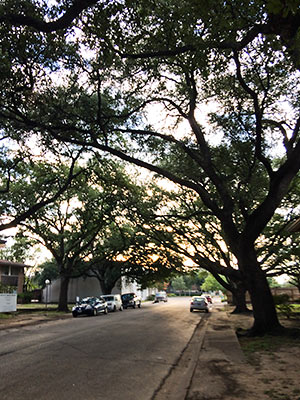 “A brutal strain of neoliberalism” and Houston’s disdain for its own history taken to “gothic extremes” have allowed developers to transform Inner Loop Houston from a “bastion for the creative class” to an “exclusive playland for the rich” in a few short years, writes Anis Shivani of Alternet. (The essay was later rebroadcast from the bully-er pulpit of Salon.com.) The nexus of Shivani’s lament is Steel St., the oak-lined Upper Kirby avenue that was once home to the Kirby Court Apartments and is now the site of an upcoming Hanover Company apartment building. Shivani, a poet, critic and fiction writer, sees the transformation of Steel St. (where he lives in
“A brutal strain of neoliberalism” and Houston’s disdain for its own history taken to “gothic extremes” have allowed developers to transform Inner Loop Houston from a “bastion for the creative class” to an “exclusive playland for the rich” in a few short years, writes Anis Shivani of Alternet. (The essay was later rebroadcast from the bully-er pulpit of Salon.com.) The nexus of Shivani’s lament is Steel St., the oak-lined Upper Kirby avenue that was once home to the Kirby Court Apartments and is now the site of an upcoming Hanover Company apartment building. Shivani, a poet, critic and fiction writer, sees the transformation of Steel St. (where he lives in a townhouse an apartment) as a microcosm for the changes going on across the Inner Loop, where “unoccupied zombie high-rises which are pure investment vehicles for global investors” are displacing the “artists, writers and eccentrics from around the country [who] descended in droves in the 2000s to take advantage of Houston’s livability.” Today’s Houston is “as unaffordable as Los Angeles or New York,” Shivani says. Among the more prominent events in this transmogrification: Last year’s demise of lively public-private space” Taco Milagro, where the “food was very healthy and people from all over the city danced the night away and congregated on the large patio.” Also, changes to the scenery of Memorial Park, where the “drought had supposedly killed” “oaks that were planted in the 1920s by the city fathers.” Shivani writes: “[In] the blink of an eye, without public discussion, the trees were demolished.” [Alternet; Salon; previously on Swamplot.] Photo: Jessie Wilson
COMMENT OF THE DAY: WITH OR WITHOUT LIGHT RAIL 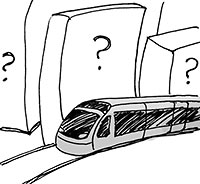 “I would dispute that the light rail has had any substantive quantitative impact on Houston’s development patterns, except to shuffle around the placement of some developments within a distance of several blocks. (That is to say, for instance, that downtown was destined to pick up a few big highrises over the last decade, but perhaps they were closer to Main rather than Allen Center.)
A lot of people forget that the re-gentrification of the Heights took place over a span of decades — without light rail. The gentrification of 3rd Ward, the East End, and the Near Northside has been ongoing for a shorter period of time, and these neighborhoods simply aren’t as well-located as Rice Military — which also transformed without light rail. I would suggest that these neighborhoods are all destined for gentrification, that it will happen slowly because we’re talking about a huge geographic area — and that it would’ve happened with or without light rail, just as with other neighborhoods.
I might be swayed if it were the case that some meaningful number of people move to Houston because it has light rail, but aside from some extremely narrow subset of people, that strikes me as bullshit. It’s not an effective economic development tool, and certainly not without zoning (which I also oppose).” [TheNiche, commenting on A First Look at the Strip Center-and-Apartments Combo That Could Go Up Between UH and TSU] Illustration: Lulu
“I would dispute that the light rail has had any substantive quantitative impact on Houston’s development patterns, except to shuffle around the placement of some developments within a distance of several blocks. (That is to say, for instance, that downtown was destined to pick up a few big highrises over the last decade, but perhaps they were closer to Main rather than Allen Center.)
A lot of people forget that the re-gentrification of the Heights took place over a span of decades — without light rail. The gentrification of 3rd Ward, the East End, and the Near Northside has been ongoing for a shorter period of time, and these neighborhoods simply aren’t as well-located as Rice Military — which also transformed without light rail. I would suggest that these neighborhoods are all destined for gentrification, that it will happen slowly because we’re talking about a huge geographic area — and that it would’ve happened with or without light rail, just as with other neighborhoods.
I might be swayed if it were the case that some meaningful number of people move to Houston because it has light rail, but aside from some extremely narrow subset of people, that strikes me as bullshit. It’s not an effective economic development tool, and certainly not without zoning (which I also oppose).” [TheNiche, commenting on A First Look at the Strip Center-and-Apartments Combo That Could Go Up Between UH and TSU] Illustration: Lulu
COMMENT OF THE DAY RUNNER-UP: THROWING OUT SOME NUMBERS ON THE FIFTH WARD “The 5th Ward as a whole is light years away from a full gentrification, but the part south of I-10 and west of Bringhurst is about 60% there.” [LRS, commenting on What’s That Cooking on Bringhurst and Clinton?]
COMMENT OF THE DAY: GETTING AHEAD OF THE GAME IN THE THIRD WARD  “The developers are usually the 3rd or 4th step in gentrification. My understanding is that it goes like this: First are usually the lower income artistic types who give the area a ‘vibe.’ Then come slightly higher income artistic types who find fixer-uppers and start increasing property values. Then come the affluent who scrape the lots to build their own houses. Finally, the developers come in to build on any remaining semi-large contiguous lots. I don’t spend much time in this part of town, but I’m not aware of much of steps 1 or 2 happening there yet (but am open to being corrected). This feels more like developers trying to sell the area as being gentrified, make a quick profit (nothing wrong with that), and then leave the purchasers stuck with condos that will be underwater for the next 10 to 15 years. So if it is gentrification, I would call it ‘Astroturf Gentrification’ — from a distance, it might look like the real, but up close, its really pretty fake and inferior to the real thing.” [Walt, commenting on New Townhomes for a New(ish) Blodgett St. in the Third Ward] Illustration: Lulu
“The developers are usually the 3rd or 4th step in gentrification. My understanding is that it goes like this: First are usually the lower income artistic types who give the area a ‘vibe.’ Then come slightly higher income artistic types who find fixer-uppers and start increasing property values. Then come the affluent who scrape the lots to build their own houses. Finally, the developers come in to build on any remaining semi-large contiguous lots. I don’t spend much time in this part of town, but I’m not aware of much of steps 1 or 2 happening there yet (but am open to being corrected). This feels more like developers trying to sell the area as being gentrified, make a quick profit (nothing wrong with that), and then leave the purchasers stuck with condos that will be underwater for the next 10 to 15 years. So if it is gentrification, I would call it ‘Astroturf Gentrification’ — from a distance, it might look like the real, but up close, its really pretty fake and inferior to the real thing.” [Walt, commenting on New Townhomes for a New(ish) Blodgett St. in the Third Ward] Illustration: Lulu
COMMENT OF THE DAY: NEIGHBORHOOD UPGRADES “. . . right now we have policies that are actively working to get rid of our affordable housing in Montrose (and other places as you point out). They’re just disguised as ‘registration’ and ‘certification’ to make sure places are ‘safe.’ That whole process should be scrapped. If someone has a run-down property people will either 1) not live in it, or 2) decide to live in it because the rent is conducive to the building quality. A ‘smart’ property owner might decide to upgrade the place to raise up the rents, whereas another owner may want to keep his place basic and get lower rents. Renters will decide where they want to go. It’s not the government’s right to force someone to pay more rent because they don’t feel something is at a given level. I’ve said it here before: Almost every building we’ve upgraded and raised the rent on gave us new tenants simply because the previous tenants couldn’t afford it. So who really benefited by our upgrades? Most of our upgrades were done by us outside of government interference (we don’t need to be told to fix things that are obviously not right about the property, our renters, banks, insurance company, etc. do a good job at that) but there have been plenty of times where we’ve done things per city demand that have raised rents and driven current tenants out. I’m sure they’re really stoked that our hand rails in Montrose are now 36″ high vs. 32″ while they now are living in 5th ward rather than the neighborhood they loved and were priced out of . . .” [Cody, commenting on Comment of the Day: Saving Houston for the Next Generation of Newcomers]
COMMENT OF THE DAY: SAVING HOUSTON FOR THE NEXT GENERATION OF NEWCOMERS “i’d just point out that Houston is a large and growing city. although the inner-loop is changing, so are all the other hoods within 20 miles of here. nobody says you have to live in the same ‘hood all your life and i’d even go so far as to say that to expect to live in the same neighborhood indefinitely without seeing major changes is just selfishness. i’ll gladly pick up and move once the montrose has finally been redeveloped for the $150K+ income bracket only. i think it kills diversity and character of the area, but i’m glad it’s growing and more people are able to live near work and greater amenities while providing a larger tax base to make this city better for all the areas . . . i think my fellow citizens deserve that at least. if it changes it changes, but there’s no shortage of places to move to. as long as it’s making the city better. move to a poor neighborhood if you don’t want to see any changes, there’s plenty around. and that’s the danger of giving neighborhoods rights over [what] can be developed. by nature they will only have their desires in mind, not that of the millions of others that could benefit from growth and new developments.” [joel, commenting on Comment of the Day: Who Cares What the Neighbors Think?]

